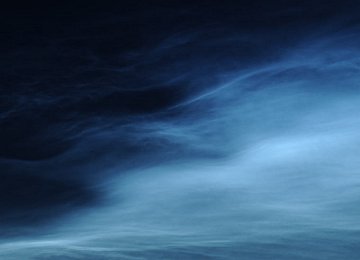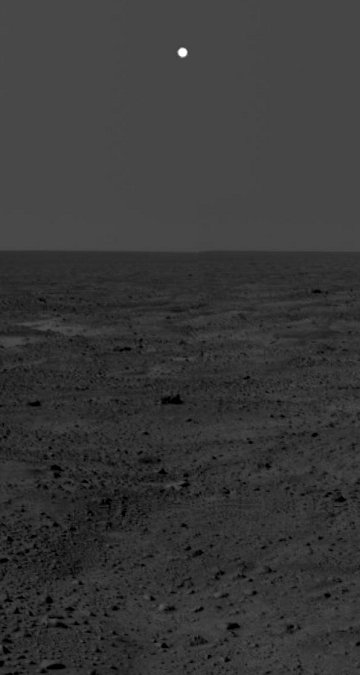| PLASMA BULLETS SPARK AURORAS: Researchers have discovered what causes brilliant outbursts of Northern Lights: Gigantic plasma bullets launched toward Earth by explosions 1/3rd of the way to the Moon. Get the full story from Science@NASA. NLCs IN MOTION: The electric-blue tendrils of noctilucent clouds (NLCs) are undeniably lovely and a fine target for backyard photographers. But a still shot hardly does them justice. Click on the image, below, to set the clouds in motion: 
Click to view a 2.5 MB time lapse movie
"The movie spans about two hours," says photographer Derick Rethans of Skien, Norway. "I set my camera to make an exposure every 30 seconds from 01:30 to 03:20 in the morning on Thursday, July 17th, 2008." A similar movie submitted by Jan Lameer of Schermer Polder, the Netherlands, is a little less blue but equally mesmerizing: play it. NLCs are most often seen from far northern places like Norway, but lately the clouds have been spreading south with sightings in the USA, Turkey and Iran. Sky watchers at all latitudes should be alert for these displays. Check the photo gallery for observing tips: 2008 Noctilucent Cloud Gallery
[Strange Clouds] [Sky Cameras] MIDNIGHT SUN: Behold the midnight sun ... on Mars: 
NASA's Phoenix lander took the picture just a few days ago. Although it was the middle of the night, the sun was still up and shining. Phoenix is located in the martian arctic--the best place to study icy soil--and there the summer sun does not set. An 11-day composite photo from Mars resembles time lapse pictures taken above the Arctic Circle on Earth. Phoenix is solar-powered and it relies on constant sunlight for all its day-to-day operations. This means Phoenix will not live forever. Martian seasons are changing, and on September 1st (Earth time) the sun will set. At first it will just briefly graze the horizon, causing little trouble for Phoenix, but by April 3, 2009, the descending sun will disappear for good. Night and frigid cold will envelop the powerless lander for more than 3 months, probably bringing the mission to an end. On the other hand, NASA's Mars landers have proven remarkably tough; perhaps Phoenix will revive itself after the long night. No one knows. Meanwhile the digging continues. BONUS--MIDNIGHT SHADOWS: As the arctic sun circles the martian sky, shadows twirl around the rocks at Phoenix's landing sight. Reader Stuart Atkinson of Kendal, England, combined three snapshots taken by Phoenix's stereo camera to create this animation he calls Midnight Shadows. | 
